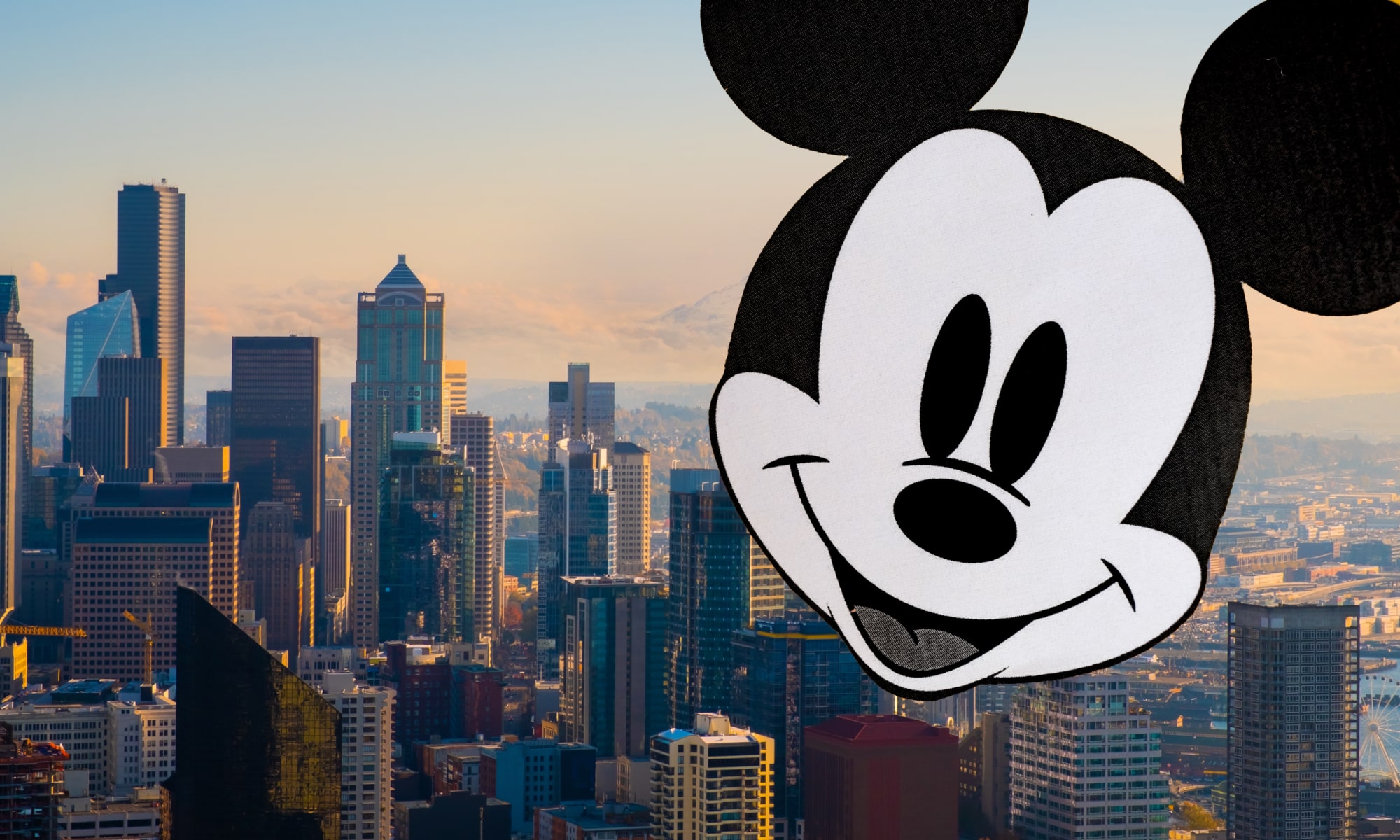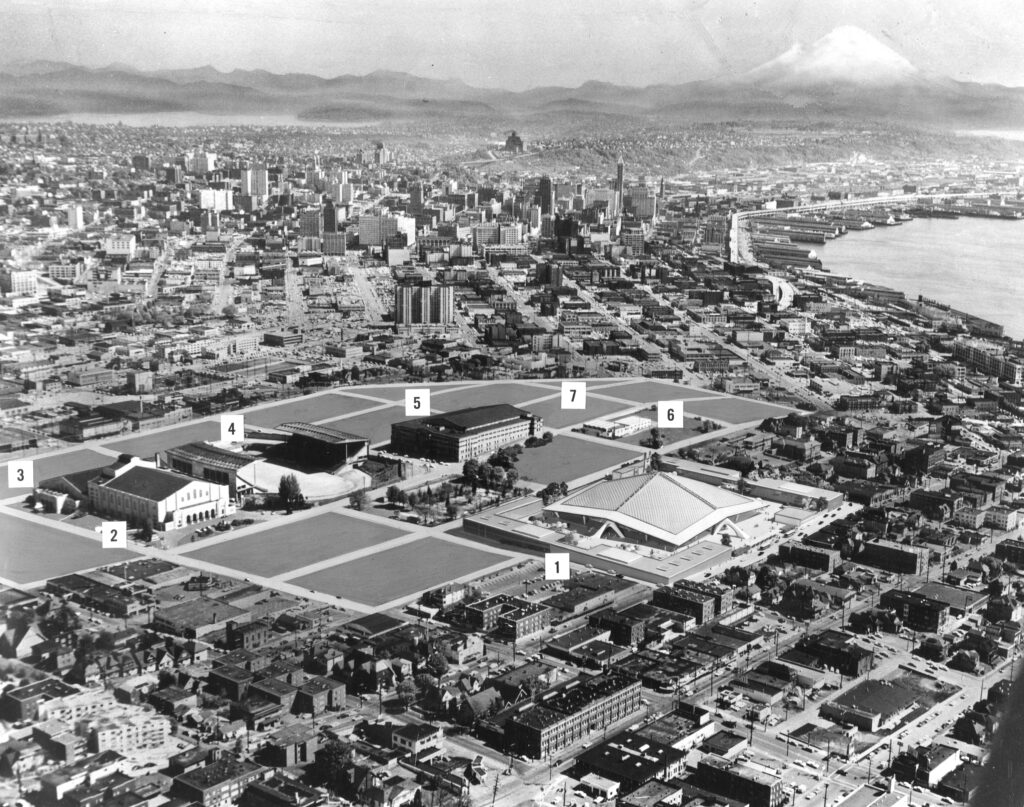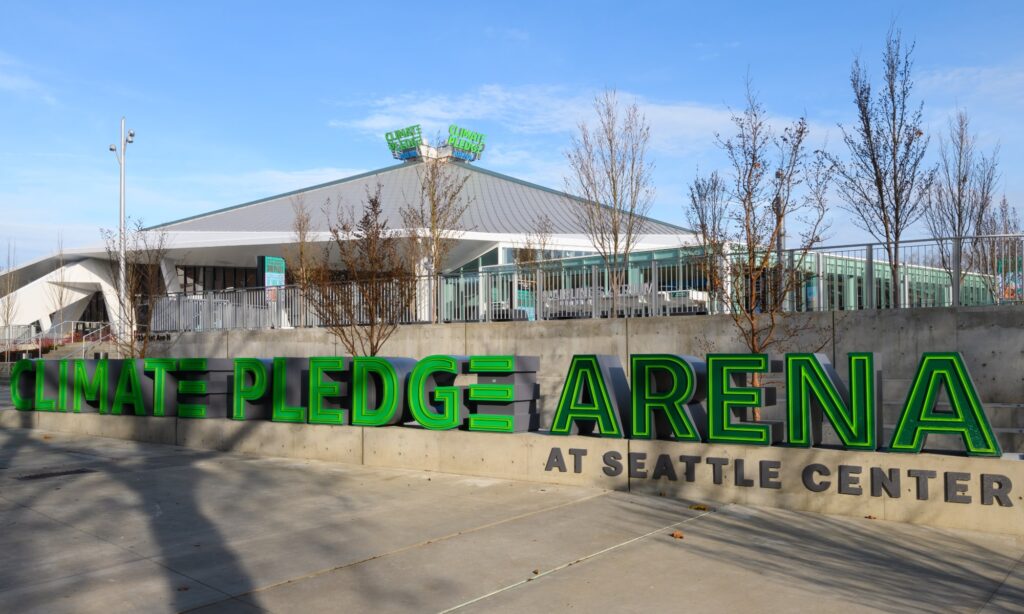- In the 1980s the city of Seattle engaged with Disney on a master plan to remake Seattle Center
- The plan would have added attractions like thrill rides, ice skating rinks, concert venues, and even ticket booths that would charge for entry
- Ultimately, the plan was rejected amid public pressure
Seattle Center was built to host the 1962 World’s Fair. During that summer, the fair (called the Century 21 Exposition) attracted nearly 10 million visitors and was broadly viewed as a success that raised the profile of Seattle. However, by the 1980s Seattle was running chronic budget shortfalls and Seattle Center was in bad need of expensive maintenance and modernization as many structures approached 30 years of age.
In a bid to revitalize Seattle Center and end the city’s budget headaches, the mayor of Seattle championed a bold plan created by none other than Disney that would radically transform Seattle Center.
Was Seattle almost home to a Disney-like theme park? Let’s dive into the “Disney Plan” and how it almost created a very different Seattle than we know today!
The 1962 World’s Fair

As noted above, the reason the city of Seattle hired Disney to re-imagine Seattle Center requires looking back in time to when Seattle hosted the World’s Fair.
The 1962 World’s Fair stretched between April and October and captured the world’s attention. Visitors included Vice President Lyndon Johnson, Elvis, Price Phillip of England, and even Walt Disney.
Attendees were whisked to the World’s Fair by a brand-new monorail system that traveled back and forth to the fairgrounds and downtown. The Fair included such marvels as:
- The 605-foot-tall Space Needle
- A brand-new arena built to host the World of Tomorrow, an interactive experience with custom elevators that created the illusion of fairgoers being raised by giant bubbles off the ground.
- There was also a massive 21st Century Exhibition meant to display the most remarkable technologies America had to offer.
- And restaurants from across the world, an amusement park, and much more.
The Seattle World’s Fair total stretched across 74 acres of land. For comparison, Disneyland Park in Anaheim covers about 85 acres. However, unlike Disneyland which runs 365 days a year, the World’s Fair was a six-month event. Once the World’s Fair ended buildings would need to be repurposed.
Seattle Center After the World’s Fair

In the years following the World’s Fair, the city of Seattle rebranded the 74 acres ‘Seattle Center’ and went about converting landmarks from their Fair usage to buildings that could last for decades. The city lured an NBA team (the Seattle Supersonics) to play at the arena built for the fair. The Century 21 Exhibition became the Pacific Science Center. And the Space Needle became an observation deck that gave tourists to the city the opportunity to take in a view of the region.
There was even a plan to build a massive stadium in Seattle Center to host a football and baseball team! A commission recommended the space for a dome (that would later become the Kingdome) in 1968. However, voters rejected this initial plan and a new location was identified south of downtown. If not for this pivotal vote, the Mariners and Seahawks would have been located in Lower Queen Anne!
While Seattle Center found uses for many old World’s Fair structures, by the 1980s many structures were approaching 30 years in age. Moreso, the city of Seattle was running recurring budget deficits that had reached more than $10 million annually, so it wasn’t flush with cash to renovate structures in Seattle Center.
The mayor of Seattle at the time – Charles Royer – came up with an ambitious plan that could generate money for the city of Seattle while also taking Seattle Center into the 21st century: he hired Disney to dream up a “Phase II” for Seattle Center.
Seattle Center Phase II: Otherwise Known as “The Disney Plan”

If you’d like to read the details of the Disney Plan it’s archived online, but the plan (named Seattle Center Phase II Interim Report) was released in May 1988 and proposed:
- In the first phase, children’s rides would be added alongside a concert venue
- The big addition in the second phase was a “thrill ride park” featuring more dramatic roller coasters and similar attractions.
- The third phase focused on the construction of an amphitheater
Other additions to the area included a skating rink, expanded meeting facilities, and a teen dance pavilion. A number of options were proposed, but the total price tag from Walt Disney Imagineering came out to about $335 million.
Of course, that high price tag would also come with more revenue opportunities. Yet, critics of the park immediately noted how it would “commercialize every last inch” of an area that was full of public spaces and rich history.
Resistance to Disney Builds
After its release, the Disney Plan immediately catalyzed local opposition. It proposed tearing down landmarks such as Memorial Stadium, which was used by local high school football teams, and the international fountain built for the World’s Fair. In addition, Disney’s proposal had a much higher price tag than other competing plans for Seattle Center that emerged and ranged from $44 million to $215 million.
Why the Disney Planned Failed
“Public Pressure more than a year ago made clear that Seattle Center would not become a Puget Sound version of Disneyland.” – Seattle Times, February 6, 1990
By 1990, the Disney Plan was effectively over. Why did it fail? As covered in the book Phantasmoagorical Culture about Disney in this time, reasons for opposition included:
- Disney refused to meet with the City Council or community members for input, which created immediate hostility.
- Their final plans made no room for the elderly or other marginalized groups.
- Not enough attention was paid to parking and the influx of traffic to the area.
- Proposals that the entire center would be fenced off and require payment for entrance into Seattle Center scared community members that used space there.
Some elements of the Disney Plan were incorporated into future proposals, but in general plans for Seattle Center moved from a full “revitalization” to more of a facelift.
Seattle Center Today

In recent decades, there have been a number of major additions to Seattle Center. The Museum of Pop Culture (MoPOP) was founded in 2000 while the Chihuly Garden and Glass exhibit opened next to the Space Needle in 2012.
Perhaps the biggest new addition to the space was the $1.15 billion renovation of the Seattle Center Arena in 2021. Today it’s known as Climate Pledge Arena and is home to the NHL’s Kraken and the WNBA’s Storm in addition to concerts and other events.
It’s worth noting that the small theme park area of Seattle Center – known as the Fun Forest – closed on Labor Day 2010. Today, the Seattle area has a small theme park 25 miles to the south of the city named Wild Waves, but other than that thrill seekers will have to hop onto a plane to get their amusement rid fix.
For true adrenaline junkies, the closest theme park is likely Silverwood, which is near Coeur d’Alene Idaho. That theme park has water rides, but also several thrill rides like ‘Timer Terror’ and ‘Stunt Loop.’

